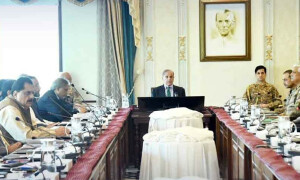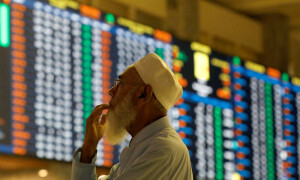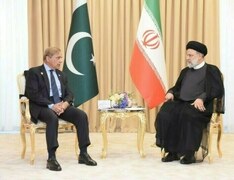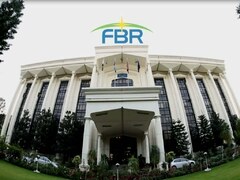EDITORIAL: Shaukat Tarin’s appointment as Minister for Finance with additional portfolio of Revenue two weeks after Dr Hafeez Sheikh’s removal, with Hammad Azhar in-charge of the portfolio for the interim period as an additional charge, presaged the reshuffling of three other portfolios: Hammad Azhar who had held the portfolio of Industries and Production was given the portfolio of Energy (his fifth portfolio since September 2018), Omar Ayub was transferred from Energy Ministry to (EAD) Economic Affairs Division (his first reshuffle) and Khusro Bakhtiar experienced his fourth reshuffle and was shunted from EAD to Industries and Production.
Even though Tarin held no official position during the PTI administration (he reportedly had refused any position on the grounds that he would like to be first cleared by National Accountability Bureau) yet he was engaged with the Prime Minister on matters relating to economic policy decisions since 2018. Tarin and Azhar, a long-term party loyalist, are now in the two most critical ministries that deal with sectors of considerable donor concern for more than a decade: power sector and the tax sector. This is evidenced from the time-bound conditions and structural benchmarks in the three most recent International Monetary Fund programmes – Stand-By Arrangement 2008-2010 (negotiated by Shaukat Tarin though he left a good six months before the programme was suspended with two tranche releases remaining due to failure to implement the agreed tax and power sector reforms); 2013-16 Extended Fund Facility with gains reversed when the programme ended in September; and the ongoing EFF (2019-2022).
Shaukat Tarin is on record even before the notification of his appointment as the Minister of Finance was issued, emphasizing the need to phase out the harsh power sector reform conditions (with dire implications on the pocketbook of households as well as on the productive sectors) given the ongoing third wave of the pandemic. Reports indicate that the government of Pakistan has already sought a revisit of the harsh IMF and World Bank energy sector conditions (envisaging more than 4 to 5 rupee per unit increase starting 1 June 2021 ending December 2021 which includes implementing the circular debt management plan with the assumption that circular debt would be zero - a debt which has escalated to 2.4 trillion rupees from 1.2 trillion rupees under Omar Ayub’s watch). Details for the remaining period of the IMF programme would emerge subsequent to reviews.
Current subsidies are unsustainable at 421 billion rupees – 191 billion rupees to 26 million domestic consumers, 26 billion rupees to Karachi consumers, 23 billion rupees to Balochistan agriculture consumers, 63 billion rupees to agriculture consumers in other provinces, 26 billion rupees to zero-rated industries, 38 billion rupees to Azad Jammu and Kashmir, 18 billion rupees to erstwhile FATA residents and 36 billion rupees as industrial support package. The donors’ response has been to present an alternate plan.
Hammad Azhar would therefore be focused on preparing such a plan and one would hope that he can begin to improve the appallingly poor governance and sector inefficiencies which would increase the government’s leverage to negotiate lower tariff rises. In addition, he needs to focus on the stalled implementation of the agreement with the IPPs where the government had pledged the release of 180 billion rupees by end March 2021 due to suo motu notice by National Accountability Bureau with its demand for copies of all 47 memoranda of understanding signed with Independent Power Producers (IPPs). The ‘facilitators’ to the agreement have had to become re-involved in the stalled process with IPPs rightly concerned with the possibility of default due to non-payment of their dues. Power and finance ministries would have to engage in this immediately to resolve the issue.
The need for tax sector reforms has been acknowledged by administration after administration but the tax structure remains skewed in favour of indirect taxes, whose incidence on the poor is greater than on the rich, while direct tax collections based on the ability to pay principal from a much smaller portion of total tax collections (withholding taxes which account for 75 to 80 percent of all direct collections are in the sales tax mode which is an indirect tax). Efforts have been ongoing since 2008 to widen the tax net through audit, accessing data from Nadra on real time basis of CNICs and associated details (Memorandum of Understanding signed last year), and access expenditure data (foreign trips, cars, houses bought, etc). Shaukat Tarin, during his first stint in the Finance Ministry, had stated that corruption/mismanagement in the Federal Board of Revenue accounted for 500 billion rupees lost revenue each year. Thus the onus would be on him to raise revenue collection not by a mere focus on raising revenue which has led to heavy reliance on low hanging fruit (taxing the already taxed) but on transforming the structure and improving administration.
However, Tarin and Azhar are between the devil and the deep blue sea: the window for extending the implementation of the electricity rate rise is 2nd September 2022 (the last scheduled IMF quarterly review after which its leverage declines) hence the phasing out of the agreed electricity rate rise to ensure full cost recovery is very limited. However, if the government opts for a request to extend the programme beyond 2nd September 2022 then Prime Minister Imran Khan may face serious repercussions that would have negative implications for his reelection bid in August 2023 elections.
Copyright Business Recorder, 2021


























Comments
Comments are closed.